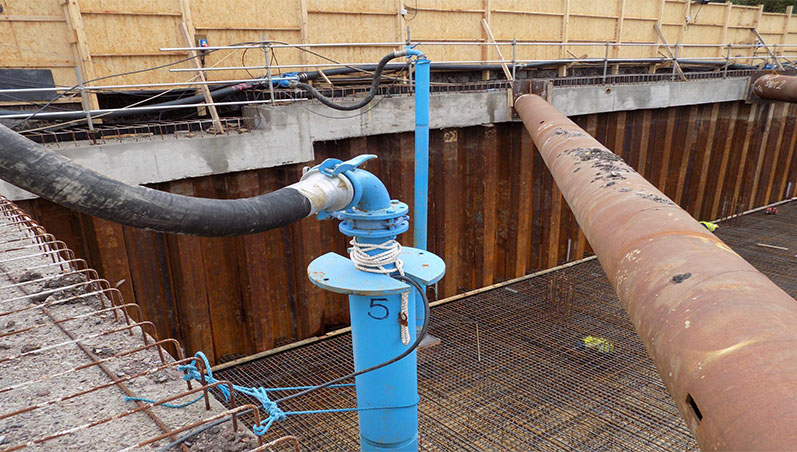
Deep well Dewatering
Deep Well dewatering systems enable the groundwater table to be lowered to a significant depth. A submersible dewatering pump is installed at the base of the well, with a casing, which generally has a minimum diameter of 150 mm. Discharge pipes from the submersible pumps of a number of neighbouring wells are connected to a single delivery main. Water is raised from the well by a multi-staged submersible pump which is able to deliver a high head relative to the depth of the well. Deep Well groundwater control systems are used to lower groundwater levels to deliver stable working conditions within excavation projects.
A Deep Well system consists of an multiple widely spaced bored wells fitted with multi-stage electric submersible pumps. Deep Well systems operate successfully in a range of soil conditions including gravel to fine sands. This dewatering approach is predominantly suited to deeper excavations or where ‘artesian groundwater pressures’ threaten base stability. Equally, the use of Deep Wells can also be effective for small amounts of draw down but over large areas, such as for digging long trenches.
Deep Wells typically consist of inclined or vertical bores, usually between 200mm to 300mm diameter placed through the strata requiring dewatering or pressure relief. A strong uPVC well casing will be placed in the borehole, including screened and cased sections. The installation of this filter pack to both maximise well yield and inhibit the movement of fines. After well development, airlifting within the well casing is carried out before a suitable electric submersible borehole pump is installed.
